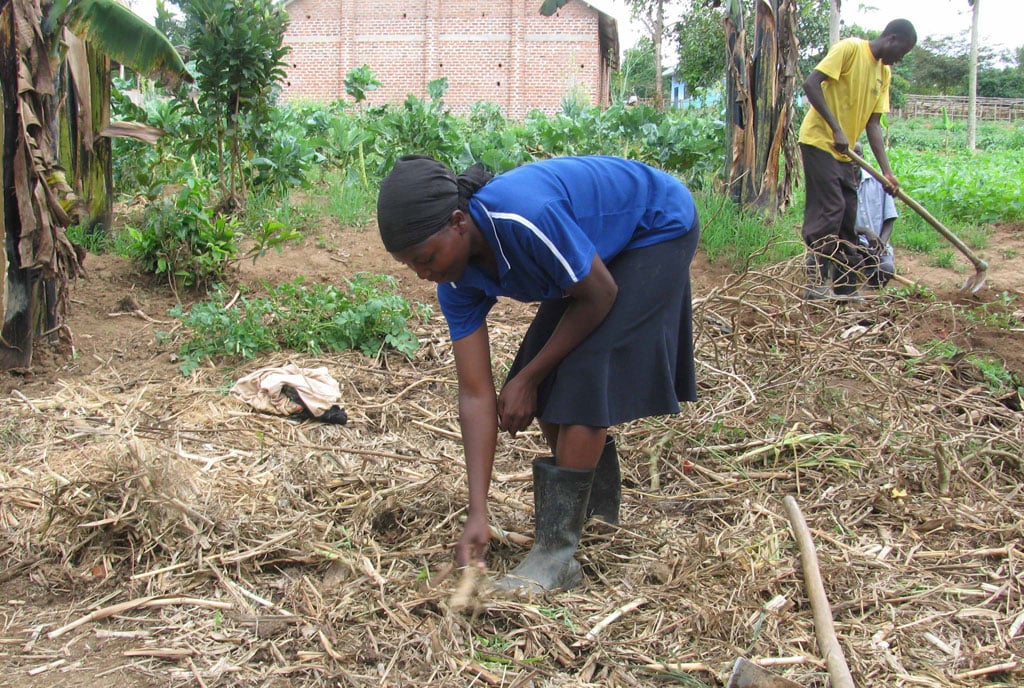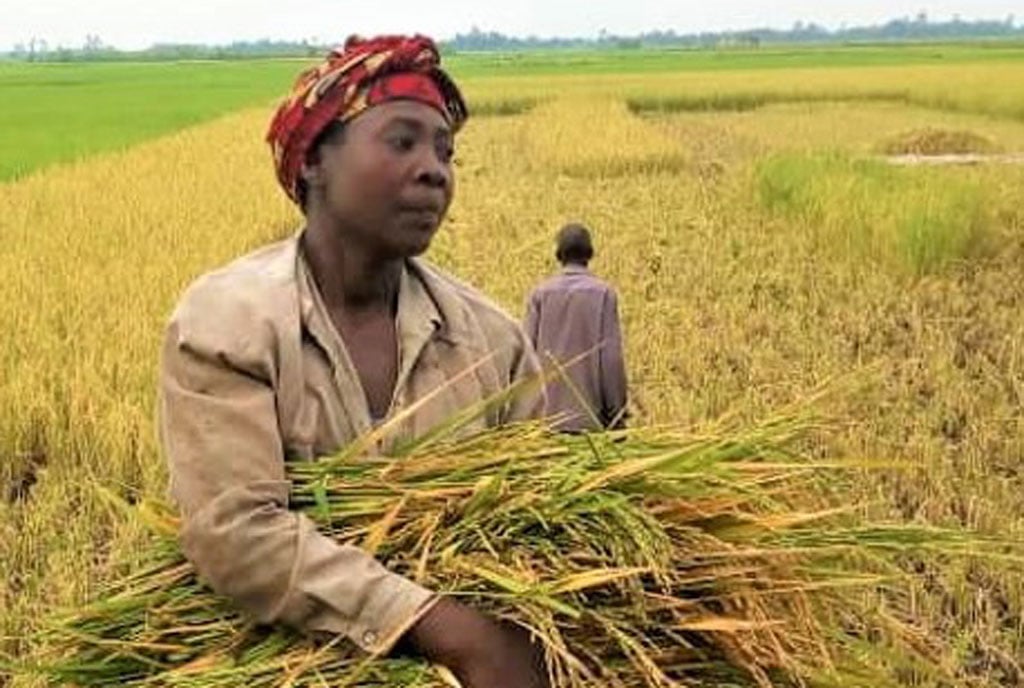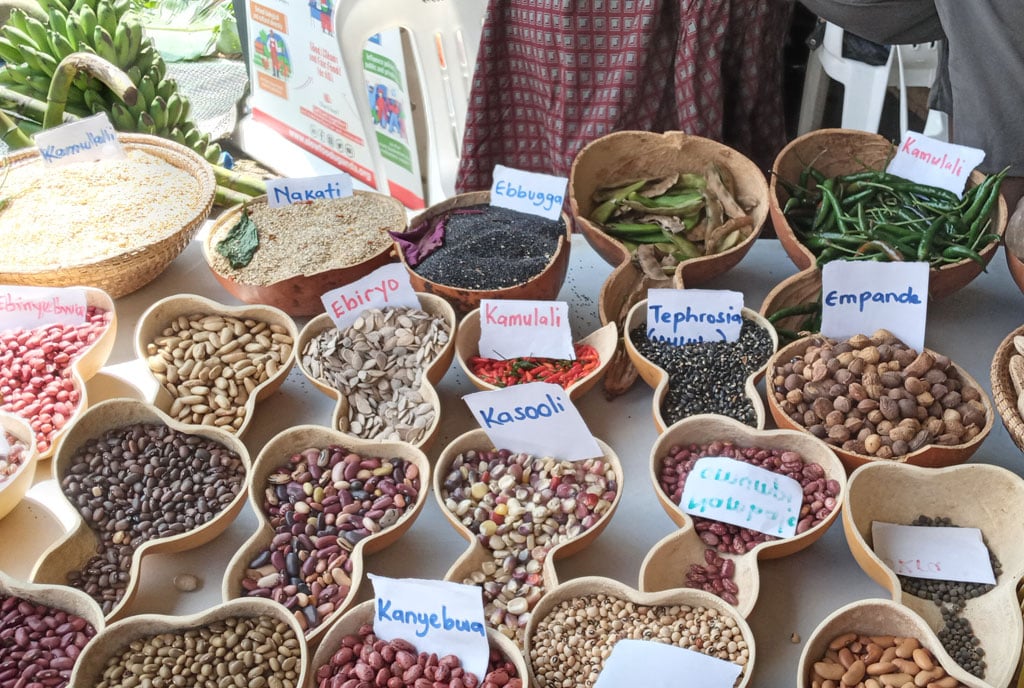Prime
Sustenance of soil fertility: A practical approach

Covering the ground with grass and leaves (mulching) adds soil nutrients. PHOTO/MICHAEL J SSALI
What you need to know:
- Greener ways for sustenance soil fertility need to be adapted to prevent further degradation of sustaining properties of soil.
- Diverse management practices include organic matter, green manuring, biofertilisers, and reduced fertiliser applications, for sustainable crop production.
Soil is the place where most plants grow. They derive nutrients and water from the soil and it is in the soil that plants are anchored. Only a few plants grow on water. Most of the livestock whose meat we eat feed on grass and crops that grow on soil.
Soil is so important in agriculture that its quality is one of the main considerations for anyone out to start a farming enterprise in any place. Soil quality is as important to the farmer as is the amount of rainfall and temperature in any given place. And for farmers that are already in the process of crop and livestock production it is important for them to sustain and even increase soil fertility for higher farm yields.
If the soil is good and the rainfall is sufficient, crop yields are normally very high unless there are catastrophes like storms or pest attacks. Farmers must therefore strive to keep the soil healthy and productive.
Ms Eseri Nankya, a soil scientist at the National Agricultural Research Organisation (Naro) at Mukono Zonal Agricultural Research Development Institute (MUZARDI) has told Seeds of Gold in a recent interview: “When farmers consistently grow crops in the same garden soil nutrients are reduced and if no effort is made to replenish the soil the harvests are reduced. Many farmers actually collect together crop residues, dry weeds, and other vegetative material and burn them. Yet these are the things they would use for mulching or composite manure making.”
Manure
Nankya goes on to state that such items as dry weeds, crop residues, and rotting tree leaves should be buried into the soil to become manure. She speaks about what she calls green manure application which is the practice of burying weeds in the soil during ground preparation as one of the efficient ways of soil nutrients sustenance. She also emphasizes mulching as another way of improving soil fertility.
“When the grass or leaves used for mulching decompose they turn into manure,” she says. “Mulching also minimises weed growth and controls soil erosion by rain and wind.”
She encourages crop farmers to keep livestock as well in order to get manure to apply to the soil. “Farmyard manure improves soil structure and facilitates water infiltration into the soil.”
She says that organic manure is good for soil enrichment because generally it supports living organisms within the soil. Such living organisms as snails and termites are responsible for soil aeration and transporting nutrients to the lower parts of the soil where they are taken up by the roots.
Soil testing
Nankya, however, says that farmers may go use inorganic fertilisers such as NPK, CAN, and DAP.
“We recommend integration of both organic and inorganic fertilisers because sometimes the organic fertilisers may not have the required soil nutrients in sufficient amounts.
But it is important for the farmers to have the soil tested to be sure what nutrient is in short supply instead of blindly applying the inorganic fertilisers. All inorganic fertilisers must strictly be applied according to the user instructions indicated on the containers. If not well applied they can kill the microorganisms that naturally live in the soil to sustain fertility.”
She recommended other soil fertility sustenance measures such as water conservation measures like digging trenches across the fields to trap running water.
“This is particularly important for farmers working on land that is sloping. They should also plant grass strips across the fields to mitigate soil erosion by runoff. Other good practices to mitigate soil erosion include planting hedge-rows preferably fodder trees.”
She explains that when a farmer has to plant grass strips or hedge-rows the grass and shrubs planted should also be edible to the animals on the farm. She mentions some of the preferable fodder plants as calliandra, lucina napia grass and brachiaria.
Cutting costs
When a farmer keeps livestock and grows crops there are higher chances of sustaining soil fertility and reducing the cost of farm inputs. Some crop residues like maize stalks and bean left-over material can be fed on cattle and goats. The livestock manure can in turn be used to fertilize the garden.
Professor Julius Zaake, a soil scientist who taught at Makerere University for many years, once told Seeds of Gold that what comes from the soil should be returned to the soil as a way of sustaining soil fertility.
“When bananas are harvested and transported to urban centres like Kampala nutrients are also taken away from the farm,” he says. “The banana peelings will never come back to the farm. That means nutrients are lost.”
He says this could even be the reason why banana production has declined in many parts of the central region where not all banana farmers are livestock keepers. He says wherever bananas and other crops are grown there ought to be a way of replenishing the soil by fertiliser application.
Conservational agriculture
Farmers are also encouraged to practice what is known as conservation agriculture. According to a booklet prepared by Naro titled, “Operational Field Guide for Establishing and Managing Conservation Agriculture Demonstrations,” conservation agriculture is any system or practice which aims to conserve soil and water.
It goes on to say, “conservation agriculture is one of the elements of conservation farming. Conservation agriculture aims to make better use of agricultural resources through the integrated management of available soil, water, and biological resources, combined with limited external inputs. It contributes to environmental conservation and to sustainable agricultural production by maintaining a permanent or semi-permanent organic cover (FAO 2002). Zero or minimum tillage, direct seeding and a varied crop rotation are important elements of conservation agriculture.”`
In that booklet which is authored by Drake Mubiru, Jalia Namakula, Geofrey Otim, Joselyn Kashagama and Milly Nakafeero it is states, “in conventional farming the same crop is sometimes planted every season on the same piece of land. This allows certain pests, diseases, and weeds to survive and multiply, and lowers soil fertility, resulting in lower crop productivity. In conservation agriculture this is minimised by planting the right mix of crops from season to season. Rotation with legumes helps to improve and maintain soil fertility.”
In conservation agriculture the farmer tries as much as possible to avoid digging up the soil even if it is for the purpose of preparing a fine seedbed and controlling weeds. Digging in a garden has been found to contribute to soil erosion and declining soil fertility. In this direction farmers are strongly encouraged to limit tillage to ripping planting lines or making holes with a stick, hoe, or jab planter for planting. The farmer must as much as possible avoid disturbing the soil for whatever purpose.
Farmers are also encouraged to keep the soil covered either with dry grass and leaves or some cover plants especially those that fix nitrogen in the soil often referred to as leguminous cover crops such as mucuna pruriens (velvet bean) , Canavalia ensiformis , (jack bean) and some others.
Management
Advancing food security and environmental sustainability in farming systems requires an integrated soil fertility management approach that maximises crop production while minimising the mining of soil nutrient reserves and the degradation of the physical and chemical properties of soil that can lead to land degradation , including soil erosion.
Such soil fertility management practices include the use of fertilizers, organic inputs, crop rotation with legumes and the use of improved germplasm, combined with the knowledge on how to adapt these practices to local conditions.




